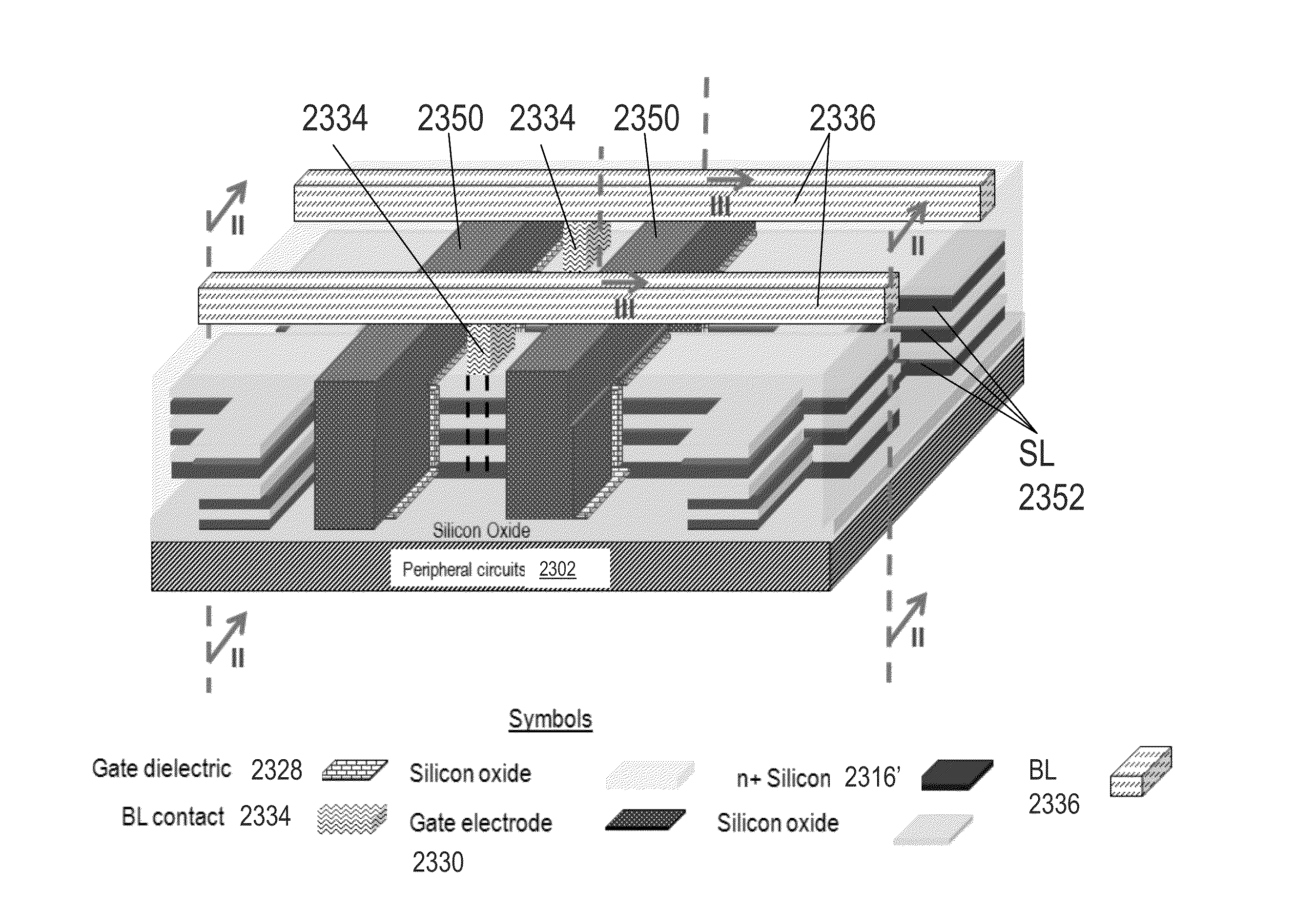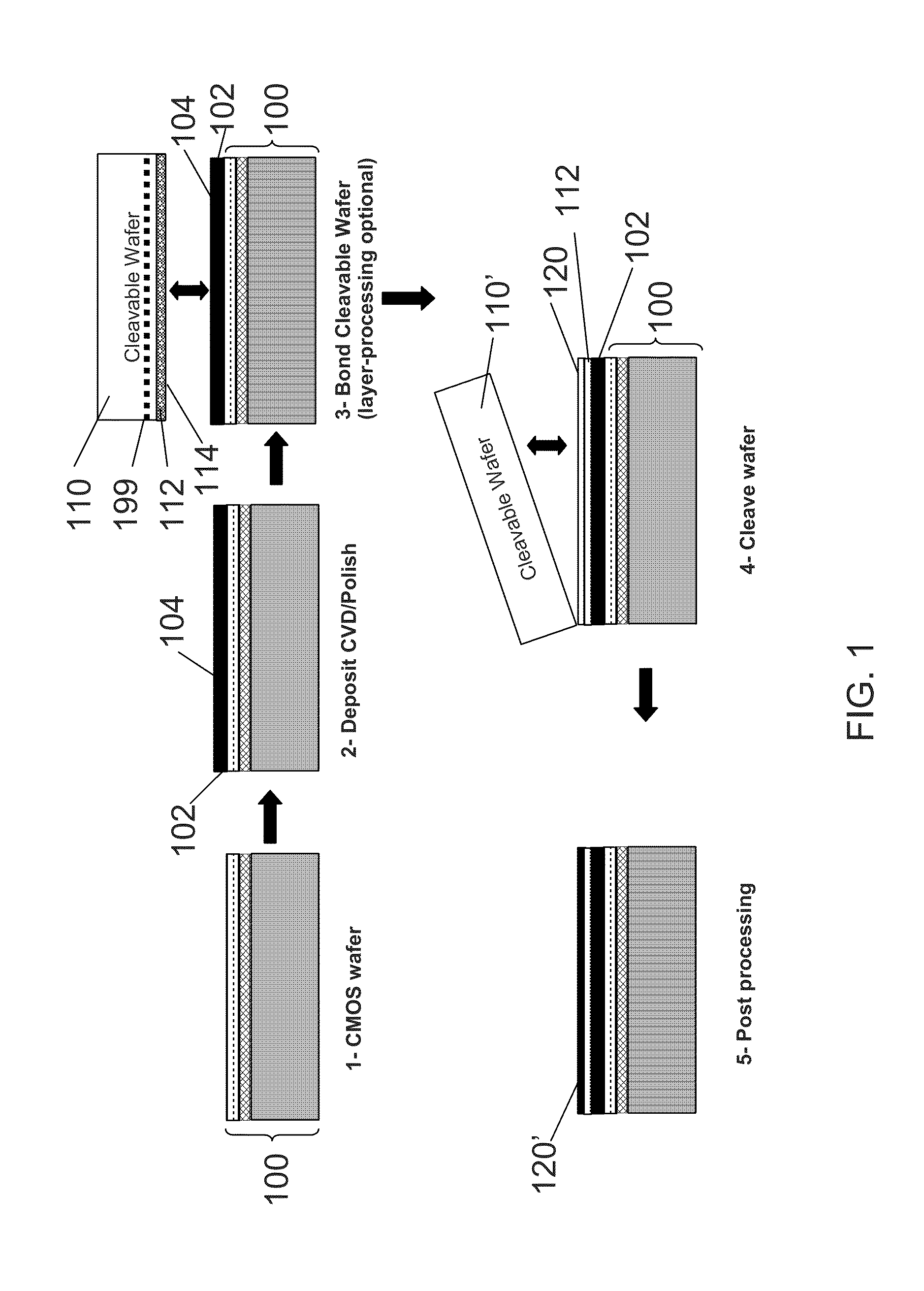Method for fabrication of a semiconductor device and structure
a fabrication method and semiconductor technology, applied in semiconductor devices, semiconductor/solid-state device details, electrical devices, etc., can solve the problems of poor yield performance, difficult handling and processing of thinned silicon wafers, and low efficiency, and achieve the effect of improving speed, small footprint, and improving performan
- Summary
- Abstract
- Description
- Claims
- Application Information
AI Technical Summary
Benefits of technology
Problems solved by technology
Method used
Image
Examples
Embodiment Construction
Wherein Wafer Sized Doped Layers are Transferred and then Processed to Create 3D ICs.
[0113]An embodiment of this invention is to pre-process a donor wafer by forming wafer sized layers of various materials without a process temperature restriction, then layer transferring the pre-processed donor wafer to the acceptor wafer, and processing at either low temperature (below approximately 400° C.) or high temperature (greater than approximately 400° C.) after the layer transfer to form device structures, such as transistors, on or in the donor wafer that may be physically aligned and may be electrically coupled or connected to the acceptor wafer. A wafer sized layer denotes a continuous layer of material or combination of materials that extends across the wafer to the full extent of the wafer edges and may be approximately uniform in thickness. If the wafer sized layer compromises dopants, then the dopant concentration may be substantially the same in the x and y direction across the wa...
PUM
 Login to View More
Login to View More Abstract
Description
Claims
Application Information
 Login to View More
Login to View More - R&D
- Intellectual Property
- Life Sciences
- Materials
- Tech Scout
- Unparalleled Data Quality
- Higher Quality Content
- 60% Fewer Hallucinations
Browse by: Latest US Patents, China's latest patents, Technical Efficacy Thesaurus, Application Domain, Technology Topic, Popular Technical Reports.
© 2025 PatSnap. All rights reserved.Legal|Privacy policy|Modern Slavery Act Transparency Statement|Sitemap|About US| Contact US: help@patsnap.com



